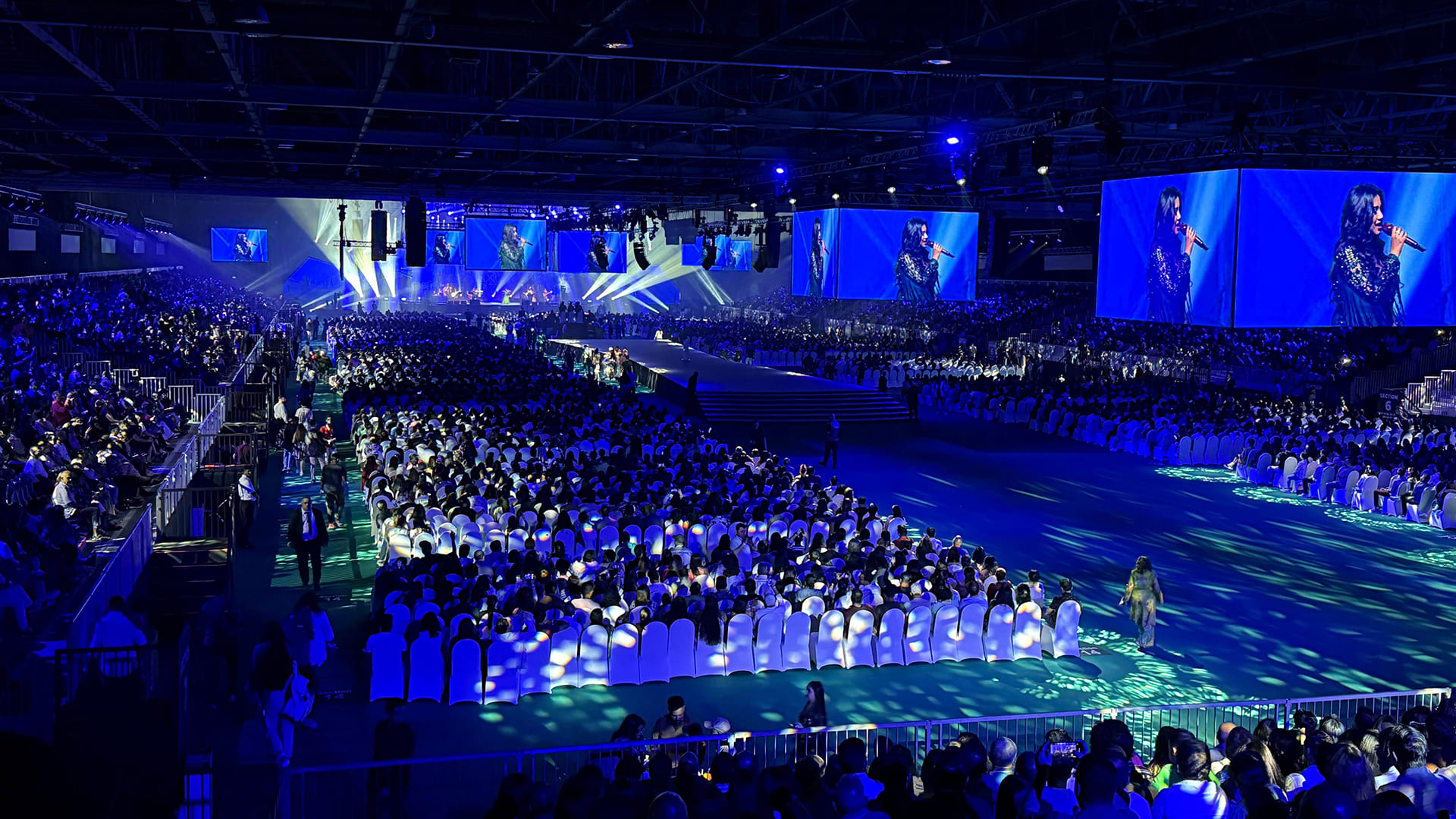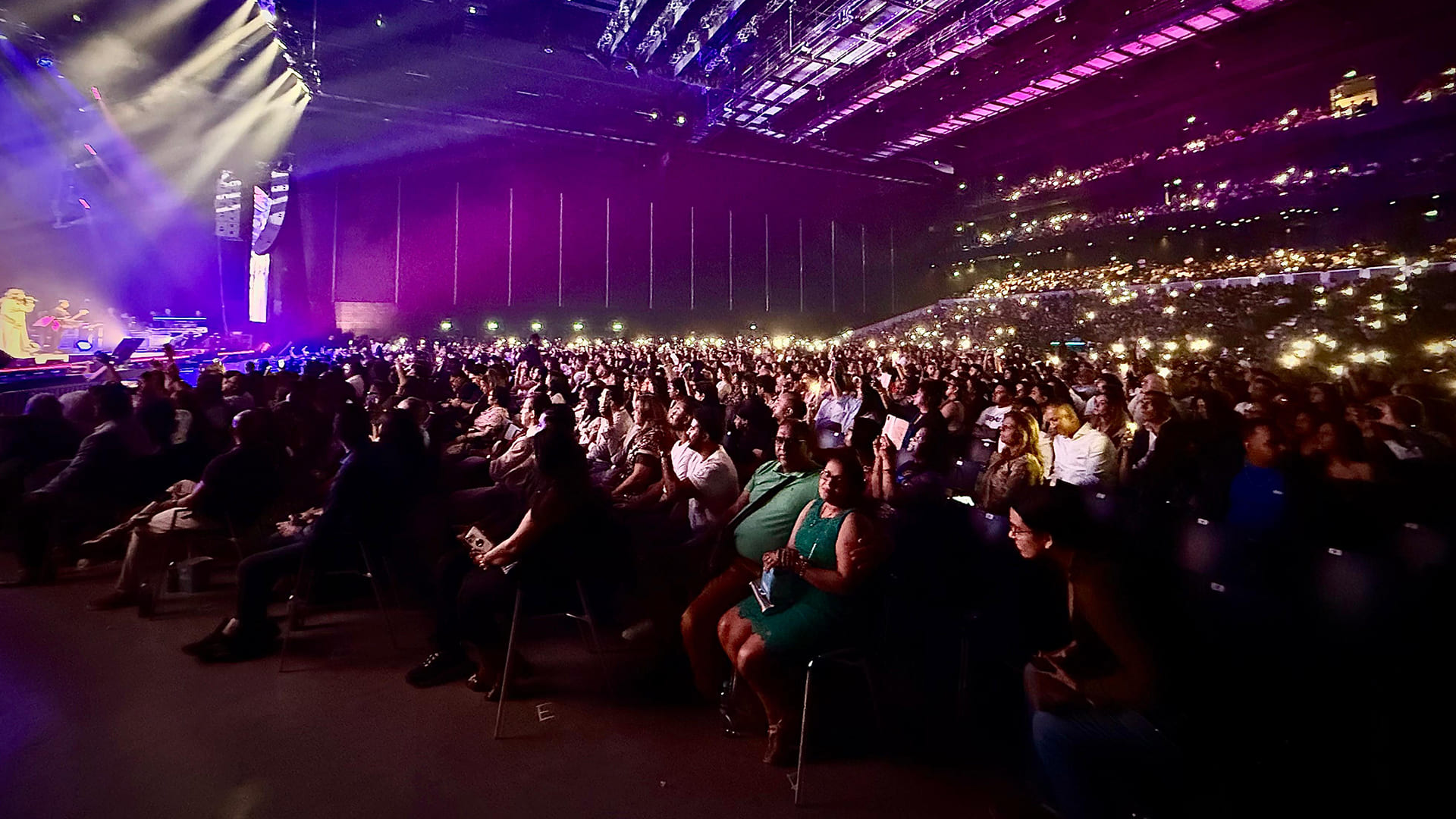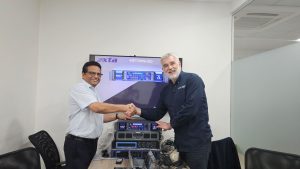From Coldplay’s record-breaking shows to sold-out performances by Diljit Dosanjh, India’s live entertainment sector is experiencing unprecedented growth. But as the concert economy surges past ₹12,000 crore, a critical infrastructure gap threatens to limit this momentum: the country desperately needs more high-performance indoor venues. Without them, India risks losing both revenue and relevance during the six-month monsoon hiatus that currently brings the concert season to a grinding halt.
India’s festival and concert landscape has evolved dramatically. No longer just a stop on international tours, the country has become a must-visit destination for global artists while simultaneously nurturing a thriving domestic music scene that often outdraws international acts.
The numbers tell a compelling story. In 2024, India hosted approximately 30,687 live events across 319 cities, with an 18% rise in live entertainment consumption. The market surpassed ₹12,000 crore, driven by roughly 70-80 days of large-scale concerts with over 10,000 attendees per day. This translates to 35 weekends during a concert season that spans just five months—a concentration of activity that highlights both the industry’s vibrancy and its constraints.
Prime Minister Narendra Modi recently underscored this potential, citing Coldplay’s concerts that contributed over ₹1.72 billion to the economy. His emphasis on infrastructure investment and skill development reflects a growing recognition that India’s rich musical heritage and youthful demographics position it to become a global entertainment powerhouse.
The Weather Problem
India faces a unique challenge that separates it from other major concert markets: weather seasonality. Concerts and festivals slow down dramatically after April and remain largely dormant until October, when the season reopens.
Most large-scale concerts take place outdoors, leveraging India’s abundant stadiums and makeshift grounds that can be converted into functional venues. But during the monsoon season, outdoor events become impractical, if not impossible. This six-month gap represents an enormous opportunity cost—lost revenue, missed performances, and constrained growth for an industry with surging demand.
The solution is clear: India needs more indoor venues capable of accommodating large crowds year-round. Specifically, the country requires a substantial increase in performance venues and multifunctional convention centers with capacities ranging from 15,000 to 30,000 people.
An Industry at Capacity
Current demand far outstrips supply. Stadium concerts regularly sell out, forcing promoters to add extra show days or increase capacity. Major festivals like Lollapalooza, NH7 Weekender, and Magnetic Fields routinely achieve 100% ticket sell-through, often within minutes or hours of going on sale.
Premium zones, VIP experiences, and platinum passes sell out almost instantly, with general admission following close behind. Mid-sized indoor venues seating 10,000-15,000 face overwhelming demand, particularly for domestic stars like Diljit Dosanjh, AP Dhillon, Shreya Ghoshal, and Sunidhi Chauhan.
The premium ticket category alone saw over 100% year-on-year growth, indicating strong appetite for unique event experiences. Attendees increasingly seek VIP packages, curated zones, and exclusive benefits—amenities that well-designed indoor venues can deliver consistently.
Tier-2 cities have emerged as viable concert markets, with ticket sell-through rates exceeding 85% when included in multi-city tours. This geographic expansion accelerates broader access to the concert economy while generating economic boosts for local tourism, hospitality, food, and retail industries.
India’s 2025 concert season set records not only for gross attendance and revenue but also for average sell-through rates, which consistently hovered at or near capacity for headline acts. These metrics place Indian live events among the most in-demand in Asia.
What Makes a High-Performance Venue?
The need for state-of-the-art indoor venues stems from evolving audience expectations, the increasing complexity of modern performances, and the rising presence of acts, both domestic and international that require world-class production standards.
Acoustic Excellence
Venues must provide clear, balanced, and distortion-free sound across all seating areas. Unlike outdoor spaces, indoor venues require meticulous acoustic design to manage reverberation, reflections, and sound isolation. Modern facilities should integrate variable acoustics, carefully designed room geometry, and advanced acoustic treatments to deliver consistent sonic experiences.
Cutting-edge venues can deploy virtual acoustic systems and immersive audio technologies that deliver spatial sound, immersing audiences in three-dimensional audio environments. Concerts demand powerful, flexible sound reinforcement systems capable of handling broad dynamic ranges. Leading venues utilize line-array speaker systems, subwoofers, and digital signal processing to cover large audiences evenly with excellent sonic fidelity, enabling artists to replicate studio-quality sound and create impactful live dynamics.
Immersive Visual Experiences
Multi-sensory engagement extends beyond audio. High-performance venues should integrate LED walls, intelligent lighting rigs, projection mapping, and augmented reality elements to elevate artistic performances. These immersive components enhance emotional connection, narrative storytelling, and audience participation is transforming concerts from passive listening experiences into unforgettable events.
Technical Flexibility and Adaptability
Perhaps the most critical characteristic of a high-performance indoor venue is its technical flexibility. Facilities must offer modular staging, rigging, and acoustics adaptable to diverse genres and show sizes, from intimate acoustic sets to large-scale EDM performances.
With increasing domestic and international tours featuring elaborate production designs, venues must accommodate complex lighting, audio, and video setups. This flexibility reduces setup times, improves operator safety, and ensures venue compatibility across different production requirements.
Equally important is the ease of teardown and reconfiguration. Most artists and their technical crews have specific preferences, and local vendors are often brought in to provide and deploy equipment. In such cases, rigging points and other infrastructural requirements must be in place to ensure venue adaptability and smooth setup processes.
The Economic and Cultural Imperative
High-quality indoor venues position India as a competitive global live entertainment destination. They attract marquee performances, boost ticket sales, create job opportunities in venue operations and technical services, and stimulate ancillary industries such as travel, hospitality, retail, and food services.
Beyond economics, immersive venues provide platforms to preserve and showcase India’s diverse cultural expressions and music traditions with modern production values. They serve as bridges between heritage and innovation, allowing traditional art forms to reach new audiences through contemporary presentation.
The infrastructure gap represents more than just lost revenue during monsoon months,it’s a brake on India’s emergence as a year-round entertainment hub. As the concert economy matures and audience expectations rise, the country’s ability to deliver world-class experiences will increasingly depend on purpose-built, technologically advanced indoor venues.
Looking Forward
India’s concert scene is booming, and the demand shows no signs of slowing. But to sustain this momentum and capitalize on its full potential, the country must invest in indoor venues equipped with cutting-edge technology and immersive capabilities. These facilities are essential for delivering exceptional acoustic performances, maintaining technical flexibility, and creating the unforgettable multisensory experiences that international artists and their audiences expect.
Investing in high-performance indoor venues isn’t just about weatherproofing the concert season—it’s about cementing India’s reputation as a global entertainment powerhouse, expanding opportunities for artists and audiences alike, and ensuring that the concert economy can thrive year-round across the entire country. The infrastructure to support India’s musical ambitions must match the scale of its talent and the enthusiasm of its audiences. The time to build is now.






